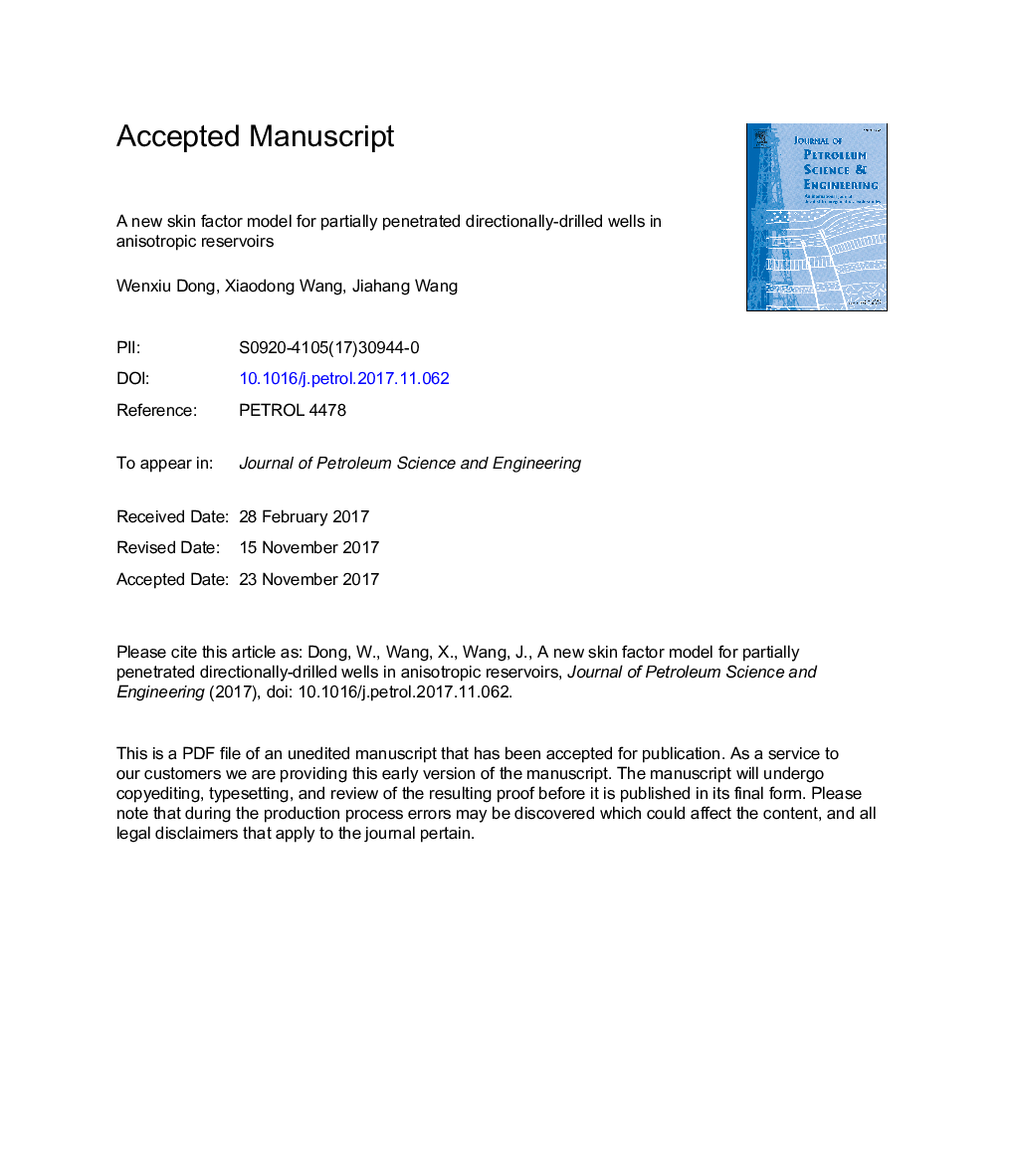| کد مقاله | کد نشریه | سال انتشار | مقاله انگلیسی | نسخه تمام متن |
|---|---|---|---|---|
| 8125456 | 1522780 | 2018 | 26 صفحه PDF | دانلود رایگان |
عنوان انگلیسی مقاله ISI
A new skin factor model for partially penetrated directionally-drilled wells in anisotropic reservoirs
ترجمه فارسی عنوان
مدل جدید فاکتور پوستی برای نفوذ چاه های حفره جهت حفاری در مخازن ناهمسانگردی
دانلود مقاله + سفارش ترجمه
دانلود مقاله ISI انگلیسی
رایگان برای ایرانیان
کلمات کلیدی
موضوعات مرتبط
مهندسی و علوم پایه
علوم زمین و سیارات
زمین شناسی اقتصادی
چکیده انگلیسی
To study the stimulation effect of partially penetrated directionally-drilled wells, the skin factor model for partially penetrated directionally-drilled wells needs to be figured out. Based on the solution of a continuous point source in a laterally infinite reservoir, the solution of partially penetrated directionally-drilled wells in an infinite slab reservoir is obtained by using integral along the directional well. Then by the approximation treatment of large-time pressure solution, a new simplified skin factor model for partially penetrated directionally-drilled wells is obtained. The good agreements with classical result and numerical simulation result validate the solution in this work. According to the new skin factor model, curves of skin factor in terms of several influencing factors, such as inclination angle, well length, formation thickness and reservoir anisotropy factor are presented. Analysis shows that with the increase of inclination angle and relative well length, the skin factor will decrease, but the increase of anisotropy factor causes the skin factor to increase. Besides, the application of how skin factor is used to analyze the stimulation ratio of WPI (well productivity index) is presented. It can be concluded that for a certain reservoir, partially penetrated directionally-drilled wells with large inclination angle and relative well length will have good stimulation effect. Moreover, large vertical permeability is beneficial to the production of partially penetrated directionally-drilled wells.
ناشر
Database: Elsevier - ScienceDirect (ساینس دایرکت)
Journal: Journal of Petroleum Science and Engineering - Volume 161, February 2018, Pages 334-348
Journal: Journal of Petroleum Science and Engineering - Volume 161, February 2018, Pages 334-348
نویسندگان
Wenxiu Dong, Xiaodong Wang, Jiahang Wang,
